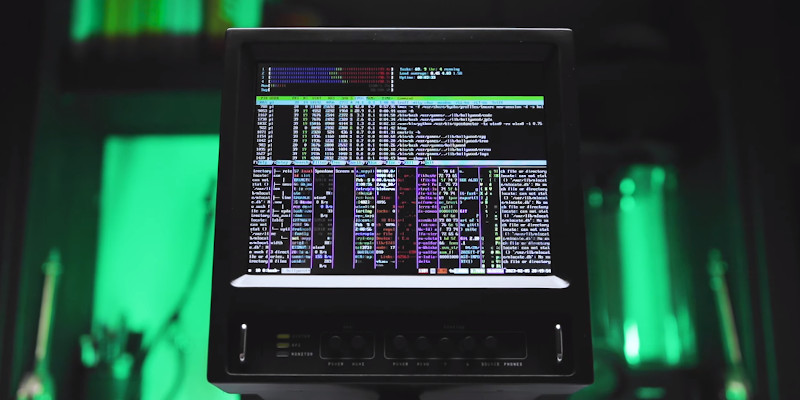A quick glance at the “Pi Terminal” built by [Salim Benbouziyane], and you might think he pulled an old CRT monitor out of a video editing bay and gutted it. Which, of course, is the point. But what you’re actually looking at is a completely new construction, featuring a fully 3D printed enclosure, a clever PCB control panel, and some very slick internal engineering.
[Salim] started the design by recreating the principle components of the build, namely the 8 inch 4:3 IPS LCD panel and Raspberry Pi 4, digitally in CAD. This let him design the enclosure around the parts, rather than trying to cram everything in after the fact. After printing the case, which clearly took considerable inspiration from broadcast video monitors of the early 2000s, he then painstakingly post-processed the parts using tips and techniques picked up from prop builders. To really finish things off, he designed his control panel as a PCB so he could have it professionally fabricated, and used heat set inserts to hold everything tight.

While beauty is often only skin-deep, we’re happy to report that [Salim] put just as much thought and effort into the internals as he did the enclosure itself. He utilizes a number of custom PCBs to pull the components together, and busts out the crimpers to create bespoke cabling to run between them. It’s all very neat, and leaves plenty of room for expansion down the line.
For those who want to create something similar, [Salim] has not only put together the fantastic build video below, but has provided parts lists, wiring diagrams, Gerbers for the PCBs, and even the STLs used to print out the case. Though you’ll definitely need to bring your A game to bring it all together as well as he has.
While we’re not sure many would have mourned the loss of a chunky CRT (especially if the display had failed), we appreciate that [Salim] 3D printed a custom enclosure that only looks like a legitimate piece of vintage gear. We’ve covered similar projects for those who want to create retro-styled computers without tearing apart the real thing.

















And it plays DOOM!
I don’t like DOOM and FPS in general.. It’s overrated and constantly seen in such retro projects, also. 🙄
They aren’t for everyone, but you have to admit games like Wolfenstein 3D really set the pace for modern FPS games
And it has a working clock!! Hours of fun. ^^
Still lacks the curvy screen (sexiest part). I wonder if anybody ever tries just putting a curved chunk of glass in front of one of those flat panels to spice it up
They have. The biggest challenge is to glue the glass on the panel, since leaving an air gap causes reflections and a loss of contrast.
needs some flexible LCD to replicate the old trinitrons…
The phosphors in a Trinitron tube are on the glass. The aperture mask is floating behind the glass, suspended by wires. That is, the picture is still generated on the surface of the glass and to replicate that, you have to glue the LCD onto the glass with some transparent resin to avoid the reflections at the interface.
But bear in mind, it’s on the inside of glass that’s quite possibly 1/2 to a full inch thick. Glass which is actually ‘lead crystal’ for its X-ray attenuation, but as such has (I believe) a noticably higher index of refraction than ordinary window glass.
Nevertheless, if you have a small gap between the front glass and the panel, some of the light from the pixels hitting the inside surface will coincide at such a shallow angle that you get a total reflection and it bounces back onto the panel nearby. The panel illuminates itself from the front and that reduces contrast.
This effect would be reduced if the gap was wider, but that wouldn’t look like a genuine CRT. It would look like an LCD with a thin plastic bubble in front of it.
There was one guy who did the whole plastic lens glued on top of a small LCD, and it looks pretty much like it should, but it’s horribly difficult to pull off without getting bubbles or other stuff stuck in between.
Maybe a watertight gasket sealed to the edge of the LCD with a convex piece of glass filled with mineral oil in front of the screen would offer a better effect.
Nicely done. I try to put the same level of attention into all of my projects.